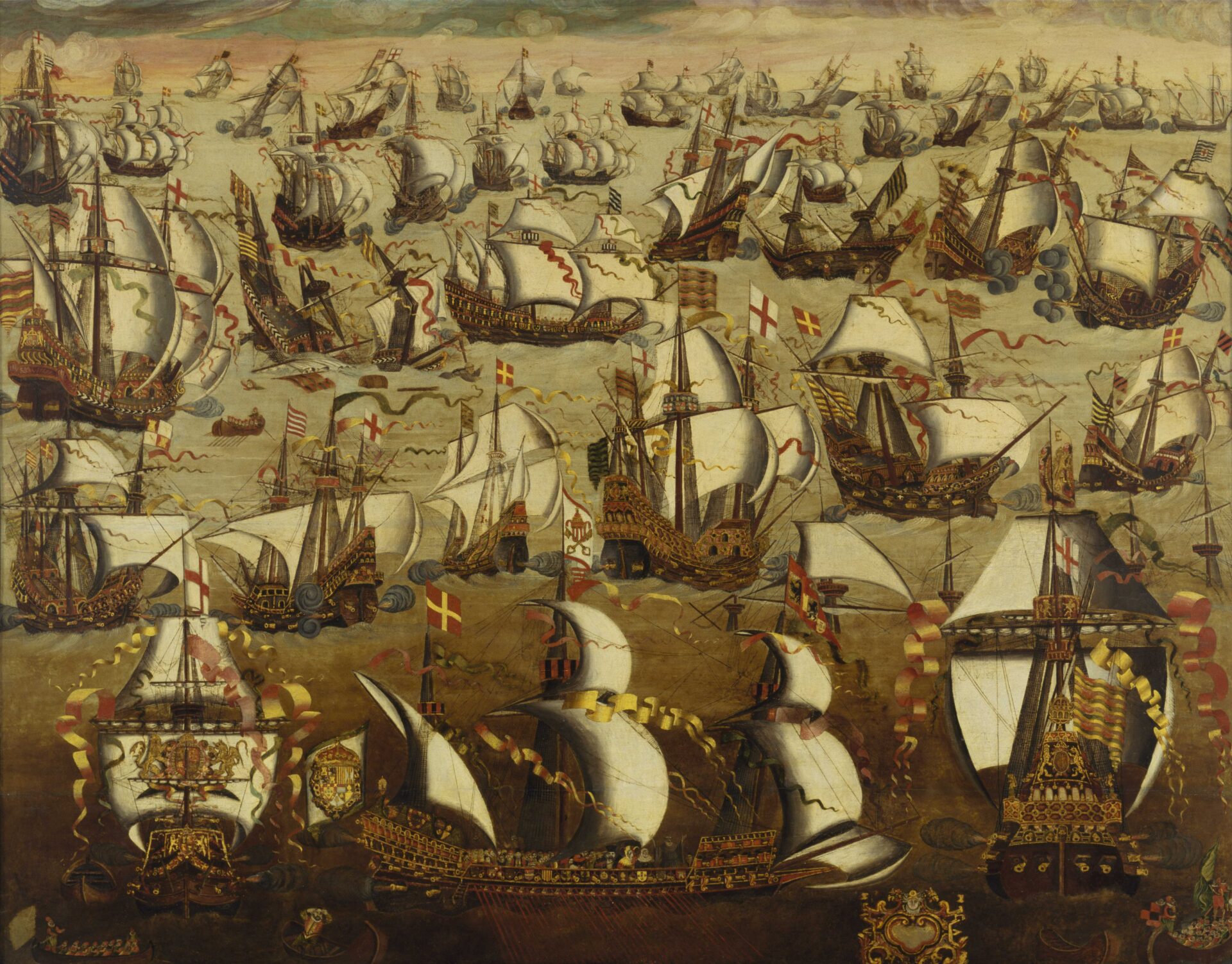In early modern times, Western society was a group of states, each striving to grow, usually by annexing other states or at least bringing them under some sort of control. At any given moment some states were on the offensive, trying to gain land, power, and wealth; others were on the defensive, trying to preserve what they had. The units in this competitive system are usually termed sovereign states, which means in practice that their rulers had armed forces to carry out their policies and could take initiatives independently of other states.
By the end of the Middle Ages, most smaller feudal units had been absorbed into bigger states over much of the West, with the exceptions of Germany and Italy. As the modern state system began to take shape in the fifteenth and sixteenth centuries, the three well-organized monarchies of Spain, France, and England dominated western Europe; Scotland, Portugal, and the Scandinavian states generally played subordinate roles. In central Europe, the Holy Roman Empire, with its many semi- sovereign member states, did not have the kind of internal unity enjoyed by the Atlantic powers.
Yet under the leadership of the Austrian Habsburgs, the Empire was a leading international competitor. Between France and the Empire lay a zone of small sovereign states where the fifteenth-century dukes of Burgundy had tried to build a revived middle kingdom. Out of this zone would eventually come Holland, Belgium, Luxembourg, Switzerland, and Italy. In southeastern Europe the new and expanding Ottoman Empire extended to the central Danube valley. To the east, Muscovite Russia was beginning to become a great state, and Poland-Lithuania was already great in size if not in power.
Many political units made up the competitive state system: dynastic states to about the end of the eighteenth century, and nation-states thereafter. Some early modern states were groupings of formerly independent units that might be separated from each other by foreign territory, that sometimes spoke different languages, and that were tied together almost solely by the ruling dynasty. Early modern wars were not total wars, and, except in their disastrous effects on government finances and on taxes, they scarcely touched the lives of the common people if those people were not in the way of contending armies trying to live off the land. In the peace settlements, no one worried greatly about transferring areas and populations from one dynasty to another.
However, the distinction between dynastic states and nation-states must not be overdrawn. Especially in the great Atlantic monarchies, a degree of national patriotism existed in the sixteenth century, and in England and France it had already been evident during the Hundred Years’ War.
At the time of the great Spanish Armada (1588) the English showed intense patriotic emotion, hating and fearing the Spanish both as foreigners and as Catholics. Even in divided Germany, Luther could count on Germans to dislike Italians. Hatred of the foreigner bound groups together at least as effectively as love of one another.

